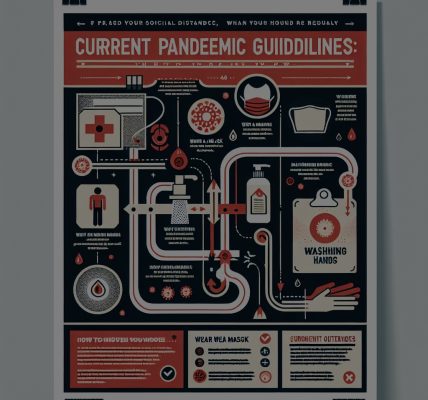As the world adjusts to the ongoing challenges posed by the COVID-19 pandemic, the prospect of travel in 2023 remains a complex and multifaceted issue. With new variants, changing regulations, and varying levels of vaccination among populations, assessing the safety of travel requires careful consideration. This article aims to provide travelers with essential insights into evaluating current COVID risks, health guidelines, vaccination and testing requirements, and the safety levels of destinations worldwide.
Evaluating Current COVID Risks for Travelers in 2023
In 2023, the landscape of COVID-19 continues to evolve, necessitating a thorough evaluation of risks associated with travel. Various factors, including vaccination rates, the emergence of new variants, and local transmission rates, significantly influence the safety of traveling to particular regions. The World Health Organization (WHO) and local health authorities frequently update their assessments, and travelers are urged to stay informed about their destinations.
Travelers should also consider personal circumstances, including underlying health conditions and vaccination status, when evaluating risk levels. While some regions report low transmission rates and high vaccination coverage, others may face spikes in cases or limited healthcare resources. Understanding how these factors intersect can help individuals make informed decisions about their travel plans.
Moreover, the role of individual responsibility cannot be overstated. While governmental guidelines provide a framework for safe travel, individual behaviors—such as mask-wearing, social distancing, and hygiene practices—play a crucial role in mitigating risks. Travelers must remain vigilant and adaptable as they navigate the uncertainties of the ongoing pandemic.
Health Guidelines: What Travelers Must Know Before Departure
Prior to embarking on any journey, travelers should familiarize themselves with the health guidelines established by both their home countries and their intended destinations. Most countries have implemented specific entry requirements, which may include proof of vaccination, negative COVID-19 tests, or quarantine measures. It is essential to check the latest information from official sources, such as government health departments and the WHO, to ensure compliance with these guidelines.
In addition to entry requirements, travelers should also be aware of local regulations that may impact their stay. For instance, some destinations may have strict mask mandates or capacity limits in public spaces. Failing to adhere to these guidelines can result in fines or, worse, contribute to increased transmission in the community. Therefore, understanding and respecting local health measures is a critical component of safe travel.
Furthermore, travelers are encouraged to maintain flexibility in their plans. As conditions can change rapidly, having contingency plans—including the ability to change flight dates or accommodation options—can reduce stress and enhance safety. Staying informed about local COVID-19 conditions and being prepared to adjust plans accordingly is vital to ensuring a safe travel experience.
Vaccination and Testing: Key Factors in Safe Travel Choices
Vaccination remains one of the most effective tools in combating COVID-19, significantly reducing the risk of severe illness and transmission. As such, many countries require travelers to be fully vaccinated to enter or participate in certain activities. For those considering international travel, it is crucial to check vaccination requirements for both the departure and destination countries. Unvaccinated travelers may face additional hurdles, such as extended quarantine periods or increased testing protocols.
In addition to vaccination, testing plays a pivotal role in safe travel choices. Many destinations require a negative COVID-19 test taken within a specific timeframe before arrival. Travelers should familiarize themselves with the types of tests accepted and the timeframes required, as these can vary greatly between countries. Rapid antigen tests, PCR tests, and other options all have different implications for travel plans and timelines.
Moreover, testing doesn’t end upon arrival. Some destinations may require additional testing during the stay or upon return to the home country. Travelers must remain proactive about scheduling these tests and understanding the associated costs. By prioritizing vaccination and testing, travelers can significantly enhance their safety and that of the communities they visit.
Destinations: Assessing Safety Levels Around the Globe
As countries navigate the complexities of the pandemic, safety levels differ markedly from one destination to another. Travelers should conduct thorough research to assess the safety of potential destinations based on COVID-19 rates, healthcare system readiness, and local protocols. Tools like the CDC’s travel health notices and government advisories provide valuable insights into which regions currently pose the highest or lowest risks.
The travel industry has also adapted to provide more information on safety measures. Many hotels, airlines, and tour operators have implemented enhanced cleaning protocols and health measures to assure travelers of their commitment to safety. However, these measures can vary widely, so it is advisable to read reviews and seek direct confirmations regarding the specific precautions each provider is undertaking.
Travelers are encouraged to consider less-traveled destinations that may offer a lower risk of congestion and transmission. Off-the-beaten-path locations could provide both a safer experience and unique opportunities for exploration. Ultimately, a careful assessment of global safety levels, in conjunction with personal health considerations, will empower travelers to make informed decisions suited to their preferences and circumstances.
Navigating travel during the COVID-19 pandemic in 2023 requires a comprehensive understanding of the current landscape, health guidelines, vaccination and testing protocols, and the safety levels of various destinations. By remaining informed, adaptable, and responsible, travelers can significantly enhance their safety and that of the communities they visit. As the situation continues to evolve, staying updated on the latest information will be paramount to enjoying a safe and fulfilling travel experience.
Understanding COVID-19 Duration: What the Latest Research RevealsRecognizing COVID-19: Key Symptoms to Watch ForExploring the Side Effects of COVID-19 Vaccines: What You Need to KnowRelevant LinkRelevant LinkRelevant Link




